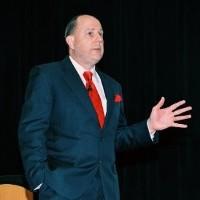I would tend to agree with Rick's comments. While there is nothing fundamentally wrong about simplifying and standardizing practices to achieve greater overall efficiency (though I am not entirely convinced about the case for automation here), the key issue is that the customer support function as a whole seems to be under considerable pressure, and potentially failing.
It is difficult to speculate on what is behind this given the few details provided. I would submit however that while properly structured performance incentives may help, they are unlikely to be at the root of the problem. Some possible issues could be:
- Product defect(s), as Rick suggested, would justify increased call volume and possibly (very) dissatisfied customers. Should this be real and structural, this would undoubtedly lead to a high level of frustration and turnover in Customer Support;
- Inadequate staffing levels or capability in Product Management leading to delays in addressing whatever structural problems are causing customers to call in (development and testing for software, engineering or manufacturing for products etc.);
- Incomplete or obsolete training material to properly support Customer Support representatives when answering calls;
- Limited CRM capability to adequately handle calls and trace problem tickets over time
- Unclear and ill-defined "customer comes first" culture could lead to very negative and potentially damaging behaviors on the floor
In short however, my thoughts are that this is not a Customer Support issue alone, and likely a broader, cross-functional challenge, the symptoms of which being more acutely felt by Customer Support, being on the front lines of customer complaints.
I hope this helps. Hopefully this isn't too speculative or off topic given the limited information available.














